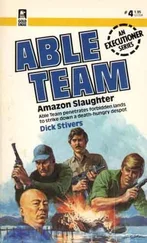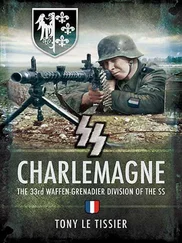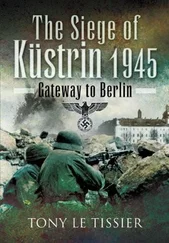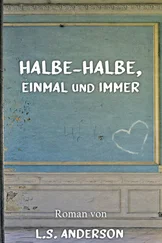Permission was then received from the Führerbunker for the OKW and OKH staff to evacuate, but the staff packed up in such haste that there was no time to destroy any of the documents and equipment left behind, and the Soviets were able to take over these items intact next day. The convoy set off for Wannsee, a south-western suburb of Berlin, at about 1500 hours and immediately came under air attack, losing two of its vehicles. From Wannsee the OKW element was redirected to Krampnitz, north of Potsdam, and the OKH to the Luftwaffe Academy at Gatow. General Krebs moved permanently into the Führerbunker with General Wilhelm Burgdorf, Hitler’s chief adjutant and head of the Army Personnel Office. [21] Gosztony, Der Kampf um Berlin , pp. 193–5 [citing Gerhard Boldt’s Die letzten Tage der Reichskanzlei , p. 49]; Ryan, The Last Battle , p. 234; Schramm, Kriegestagesbuch des OKW , pp. 1289, 1438–9; Tieke, Das Ende zwischen Oder und Elbe , p. 147, says originally twelve tanks had set off from the Kummersdorf Training Area nearby.
Hans Lehmann witnessed the arrival of 3rd Guards Tank Army in Baruth on 21 April:
As a 14-year-old, I experienced the arrival of Soviet troops in Baruth, which went as follows: a file of tanks on the left, trucks on their right, and panje wagons [22] The horse-drawn cart used by the Soviets to carry the soldiers’ personal gear.
on both pavements.
Then Me 109s came from airfields north of Berlin at about 1530 and 1830 hours and attacked the enemy troops with bombs, cannon and machine-gun fire. Each attack lasted about half an hour, and there was some damage to the buildings on the western side of the main street. Several houses were also deliberately burnt down by the Soviets because they were drunk, careless, or they had pictures of Hitler hanging on the wall. [23] Schulze, Der Kessel Halbe–Baruth–Radeland , pp. 29–30.
On the left flank 5th Guards Mechanized Corps of 4th Guards Tank Army came up against some resistance in the Jüterbog–Luckenwalde area but was still able to cover forty-five kilometres in daylight, and one group pushed on through the night for a further thirty-five kilometres, until it reached the southern obstacle belt of the Berlin Defence Area. [24] Kuby, The Russians and Berlin 1945 , p. 97; Koniev, Year of Victory , p. 115.
Jüterbog was an old garrison town with training areas, rifle ranges, schools of artillery and signals, an ammunition factory and depots, two airfields at Jüterbog Damm and Altes Lager, and military hospitals. The airfields had already been attacked by Soviet aircraft on 18 and 19 April, as had the Fuchsberg barracks complex and the railway workshops on 19 April. Next to the large Werk A ammunition factory was a camp for some 1,600 American, British and Norwegian prisoners of war, and another large camp for forced labourers. Guards Lieutenant Feodor Ivanovitch Shartshinski of the 51st Guards Tank Regiment was to be awarded a posthumous ‘Hero of the Soviet Union’ decoration after he was shot by the camp guards while attempting to liberate the labour camp with eight other scouts on 22 April. [25] Kreisleitung Jüterbog booklet, pp. 12–15.
It seems that, while 11th Guards Mechanized Brigade was left to subdue the town, 13th Guards Mechanized Brigade was ordered to push on northwards to Luckenwalde, while the orders given to 10th Guards Mechanized Brigade on 20 April read:
To take the village of Niebel on the morning of 22 April and, in the second half of that day, the town of Treuenbrietzen by a flank attack. A firm defence is then to be established in the area Niebel–Treuenbrietzen. [26] Ibid ., p.12 [citing Major-General A. P. Riasanski, Im Feuer der Panzerschlachten, Moscow , 1975, p. 179 ff.].
That evening, 20 April, General Reymann returned to Berlin with the news that the Friedrich Ludwig Jahn Division, while forming up on the parade ground at the Wehrmacht’s main ammunition depot at Jüterbog that day, had been surprised and scattered by Soviet tanks. Some of the men from the two infantry regiments had been saved but nearly all the artillery had been lost and the divisional commander, Colonel Klein, had been captured.
Shortly afterward General Krebs telephoned instructions to send this division together with the Wünsdorf Tank Unit to drive back the Soviet spearheads approaching Berlin from the south. These Führerbunker orders, committing the remains of two badly shattered regiments and a handful of tanks that had already been destroyed to repulse two tank armies, Reymann could only ignore, and he ordered the survivors back to Potsdam. [27] Refior Berlin Diaries, p. 20, Federal Military Archives Freiburg, RH 53-3-24; Koniev, Year of Victory , p. 122; Tieke, Das Ende zwischen Oder und Elbe , p. 183; Gellermann, Die Armee Wenck , p. 35.
Meanwhile General Busse was trying to cover the exposed northern flank of his truncated 9th Army as best he could. A Soviet thrust on Fürstenwalde threatened the rear of XI SS Panzer Corps, whose 169th and 712th Infantry Divisions, together with the Frankfurt Garrison, were still trying to hold on to their forward positions east of the Spree. Busse only had the remains of the Kurmark and Nederland SS Panzergrenadier Divisions to cover this exposed sector and to counter the Soviet thrusts along his front. Inevitably the infantry divisions began to reel back to the south-west as the situation rapidly deteriorated, while the Panzergrenadier divisions fought to keep the escape routes open over the Spree east of Fürstenwalde. In order to cover the Spree west of this point, part of the 32nd SS Volunteer Grenadier Division 30. Januar was pulled out of the line to establish a screen from Fürstenwalde to the Müggelsee (lake) south of the Oder–Spree Canal – Spree River barrier. [28] Tieke, Das Ende zwischen Oder und Elbe , pp. 129–80.
Frieda Schulze, a farmer’s wife, described what it was like in one of the villages in the path of the fighting:
Early in the afternoon on 20 April a leaflet was passed from house to house in Radeland with the following information: ‘Route 96 is occupied by Russian troops. Not possible to get through, you have to flee through the woods.’
We quickly packed the most important items and fled into the woods together, not knowing where we should go. We spent a night there. During that night German infantry went past us in a westerly direction. We asked one of the Radelanders whether we could come with them and got the reply: ‘You must be tired of life!’
When we went back the following day, 21 April, we found Soviet soldiers already in the village. White flags had been raised the previous day instead of the Swastika for Hitler’s birthday. From that day the fighting at Radeland kept flaring up and was sometimes heavy. The village changed hands three times. Early each day and in the evenings I left our shelter in the cellar and went out into the yard to feed the cows, which were all there and only driven away by Soviet soldiers when the fighting was over. One day German soldiers were living in our potato cellar, and the next day Soviet soldiers. The worst time for the fighting was 25 and 26 April, when the barns of Farmers Brückmann and Piesker went up in flames as a result of a Soviet air attack. [29] Schulze, Der Kessel Halbe–Baruth–Radeland , pp. 43, 45.
THREE
9th Army Encircled
21 APRIL 1945
The opportune arrival of Lieutenant-General A. A. Luchinsky’s 28th Army from the 2nd Byelorussian Front on the night of 20 April enabled Koniev to fill the gap between 3rd Guards Tank Army pushing on Berlin and 3rd Guards Army both besieging Cottbus and engaged with the German V Corps beyond it as far north-west as Baruth. He therefore allocated the 28th Army all his available transport with instructions to send one division, the 61st Guards Rifle Division, to the support of the 3rd Guards Tank Army, and to deploy two other rifle divisions in the woods around Baruth by the evening of 21 April. The rest of the army was to deploy between Zossen and Baruth by 23 April. This screening force was to block off 9th Army’s exit routes with strong defences against tanks and infantry to thwart any possible break-out to the west or south-west. Koniev was also very conscious of the vulnerability of his tank armies on the main communications route, the Dresden– Berlin autobahn.
Читать дальше












